Improved vehicle performance and accessories
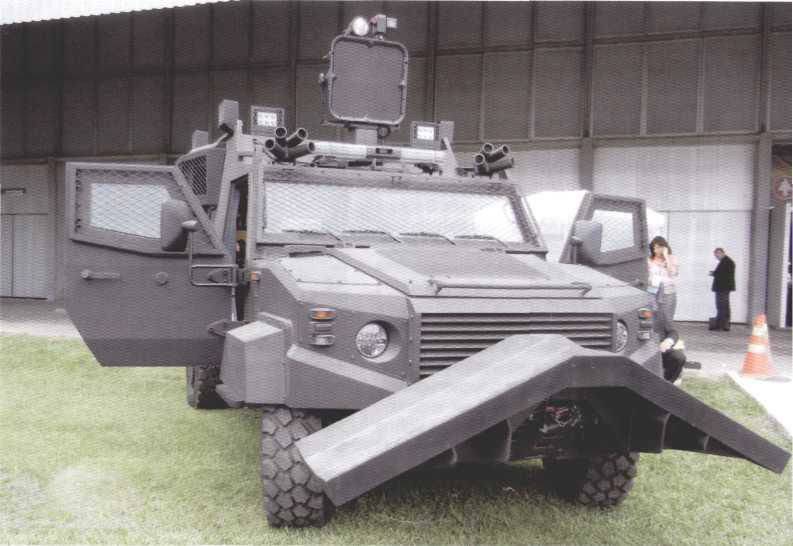
Judging from the picture, sensors, firepower, maneuverability, tactical capabilities, situational awareness and communications can all contribute to the increase in the capabilities of the machine - in fact, everything that contributes to the survivability of the crew and platform
Expanding the capabilities of vehicles can be to increase the characteristics and levels of survivability, increasing the payload, to increase engine power, as well as the integration of mast sensor sets and external power sources. We will touch here only some moments.
The use of affordable and easy to use but, nevertheless, lethal weapons, such as improvised explosive devices (IEDs) and anti-tank grenades (RPGs) against lightly armored vehicles, has become very common in recent years. As combat experience has shown, existing light armored vehicles cannot do without inevitable losses in carrying out their patrol or escort missions in a hostile environment. Also, the use of additional reservations and other protection measures is limited due to limitations in size and weight (booking problems are a topic for another article).
The design of combat vehicles has traditionally been based on the use of new and improved protection technologies in order to ensure an appropriate level of survivability when exposed to a specific set of threats. Although the layered approach has become the standard in conducting a machine survivability analysis, the inclusion of all possible levels of protection will significantly complicate the problem.
Increased survivability contributes significantly to combat effectiveness.
A combat vehicle in a hostile environment faces many threats. In recent years, the use of easy-to-use and low-cost weapons, such as IEDs, landmines, small arms and RPGs, has become widespread. For light armored vehicles, such as patrolmen and personnel transporters, the lethal effects of such weapons are well known. The survivability of such vehicles can be defined as the survival rate of the vehicle itself and the survival rate of the crew / passengers.
The system must have a sufficient level of survivability, guaranteeing the performance of a combat mission. It is very important that there is a level of survivability that will help avoid or withstand damage to the platform and its subsystems, such as communications. However, the fundamental aspect of survivability is simple - the crew and passengers must stay alive when the enemy attacks, even if the vehicle is destroyed.
In order to ensure an adequate level of survivability against a number of threats, the designers of combat vehicles have traditionally focused on special protective technologies, such as armor and fire extinguishing systems. However, other factors, including sensors, silencers, firepower, maneuverability, tactics, situational awareness and communications, contribute to the survival of the crew and platform.
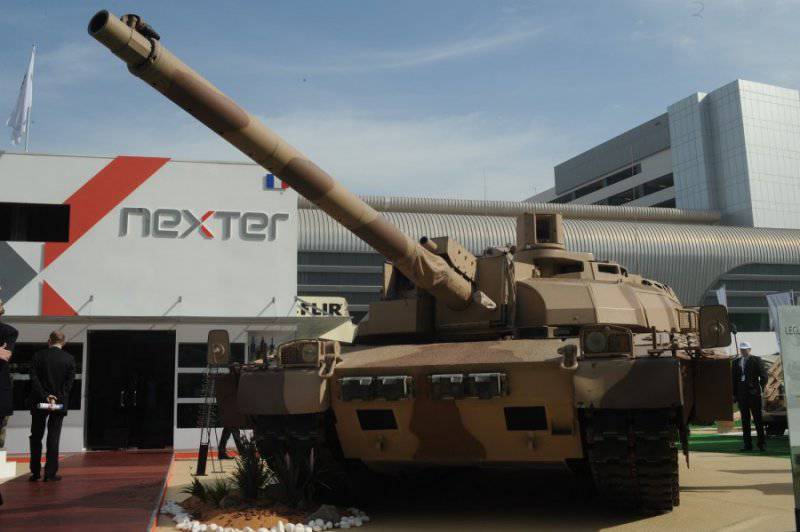
Nexter LECLERC MBT received the necessary logistical support, a number of upgrades were carried out to replace obsolete components and systems with modern versions, which made it possible to increase combat readiness and reduce operating costs.
Perhaps the most obvious lesson of the past decade is that the role of heavy armor, although reduced, continues to be very significant. For example, in the early stages of the Future Combat Systems (FCS) program, there was an overwhelming enthusiasm for replacement tank ABRAMS is a machine that could somehow combine its firepower and survivability with air transport in the C-130 HERCULES. After re-studying the laws of physics, the army command abandoned this idea and decided to do what many ground troops around the world are doing, namely to modernize their heaviest and most expensive cars left over from the Cold War one more time and make them suitable for modern battlefield. The parameters of the proposed latest version of M1 ABRAMS, designated M1A3, are still being determined. At the moment, there is an intention to complete the M1A3 project in 2014 and begin supplying vehicles to the troops in 2017. What will undoubtedly be included in the new version is more powerful on-board generators (for powering energy-consuming network systems and protection systems) and something similar to the TUSK kit (Tank Urban Survival Kit - a set of additional equipment and reservations for the Abrams tank, increasing its combat capabilities in urban conditions), which turned out to be very useful on tanks of the M1A2 SEP variant in Iraq.
Industry for the US Army
First of all, it is possible to judge the emerging plans of the American army by its relations with the main suppliers. Obviously, Oshkosh is a major player here. Operations in Afghanistan contributed to the fact that the company that created the M-ATV came to the fore by doubling the sales of its armored vehicles. With the FMTV family (Family of Medium Tactical Vehicles - a family of medium-duty military vehicles), Oshkosh seems to dominate the US military market. With contracts for HEMTT, HETS, PLS, CBT, MTVR and LMSR programs from the US Army and Marine Corps in its portfolio, Oshkosh is, in essence, the preferred vehicle manufacturer for the Pentagon.
Obviously, General Dynamics (GD) is winning with its long-term (and relatively safe) upgrade plans for all your favorite STRYKER and ABRAMS machines. Once again, the declared commitment of the American army to the ABRAMS tank, however, should not lead GD shareholders to unrestrained triumph. Heavy tank requirements were drastically reduced in most allies. Some countries that have relatively small armies, such as Australia, the Czech Republic and Denmark, have left one tank battalion in service.
The company GD Force Protection (GDFP) retains, apparently, long-term relations with the army on the heaviest vehicle in the MRAP category, and also, perhaps, its reliable position in this niche - if a market worth hundreds of millions of dollars can be called a “niche”. The Marine Corps seems to have made such an unconditional choice with the COUGAR MRAP machines (with the improved TAK-4 suspension from Oshkosh) made by GDFP as its intermediate wheeled infantry carrier, at least until its planned MPC (Marine Personnel Carriers - armored personnel carriers for marines) will not appear in the next few years. Recently, heavy MPC amphibious capacity assessment tests conducted by BAE Systems and Iveco Defense Vehicles at the Amphibious Vehicle Test Branch (AVTB) amphibious test site at Camp Pendleton have been successfully completed. This vehicle will complement the Marine Corps fleet, consisting of AAV (amphibious assault vehicle - amphibious assault vehicle), ACV (amphibious combat vehicle) and JLTV (joint light tactical vehicle - light tactical vehicle). MPC is expected to meet the needs of the Marine Corps in a medium armored ground vehicle with good protection, combat stability, networking capabilities and excellent amphibious characteristics.
Of course, the winner of the next decade will be the one who gets the contract for ground combat vehicle Ground Combat Vehicle, which was recently restructured and the stages of technology development and final development and implementation in production extended for 12 months.
To date, it’s just not quite clear which of the potential contractors has an advantage. Since the US Army has already included in its plans a program to modernize the STRYKER wheeled armored personnel carriers, it is likely that the promising GCV will be tracked. The problem with the “tracked” approach is that the flat bottom and sides of the tracked vehicles on the market do not do well with the energy of the explosion. One of the solutions is the creation of a tracked infantry carrier on the basis of a heavy tank hull, for example, the NAMER and ACHZARIT programs of IMI and BTR-Oms of OmskTransmash can be noted. It is necessary to take into account, of course, that even the ABRAMS tanks were destroyed by roadside bombs and at least one was disabled by an RPG with a tandem warhead. At the same time, it is clear that the vulnerability of machines like these heavy infantry fighting vehicles is less than the vulnerability of tracked vehicles weighing less than two or more times. Even if the bottom and sides of the tanks are flat, a large thickness of armor will absorb the energy of an explosion or a super-hot cumulative jet of shaped charges.
A little more about the two companies operating in the market of auxiliary systems for vehicles
WAVE RELAY from Persistent Systems - the necessary equipment for deployment
Persistent Systems offers a secure and “true” mobile dedicated network system with its WAVE RELAY product line. From the very beginning, the company's key products were mainly used in the industrial sector, as well as by some industrial customers. Today Persistent Systems has the ability to grow its customer base to industrial and commercial applications.
Since WAVE RELAY is scaled to a large number of devices, according to the company, with practically unlimited mobility, high-performance routing can be extended to communications equipment installed at the subscriber’s premises. This significant increase in the number of connected devices creates more routing options, leading to better connectivity and greater network bandwidth. The WAVE RELAY CPE device, being part of a multiply-connected network, provides an 802.11 access point (IEEE standard for a radio communication system with a range of no more than 10 and using frequency hopping, BlueTooth standard), which allows end users to conveniently connect at extremely high speeds. The ability of WAVE RELAY to scale to large peer-to-peer topologies makes it the ideal solution for a variety of applications, from specialized military and public security applications to Internet service providers and municipal networks seeking to attract more subscribers and provide faster, more reliable services.
A brief description of the work of the information network Wave Relay from the company Persistent Systems with my subtitles
Cost effective solution
WAVE RELAY is an economical, convenient and comprehensive package that provides the necessary equipment for almost any deployment. The Quad Radio architecture of the WAVE RELAY package includes 4 radios that can operate at different frequencies, thereby ensuring a reliable, high-speed connection in one system. Each component, from the radio station and router to the working protocols, is created by WAVE RELAY engineers with a focus on maximum compatibility. No need to purchase additional products from third-party suppliers. In addition, the ability of WAVE RELAY to distribute large bandwidth over large areas from one source saves money by acquiring bandwidth in bulk.
The WAVE RELAY technology of high-bandwidth route selection throughout the ad hoc network ensures that data will be sent in the fastest and most reliable ways to its destination. The capabilities of WAVE RELAY to include end users directly into the network cell, bypassing the slow client-access point settings, allows for greater bandwidth for the end user.
Fault tolerance is built into the WAVE RELAY system at every level. Since all nodes are connected by a network, it does not depend on a single gateway node. If one of the nodes fails, the data is sent in a different way. High-performance routing quickly adapts to changes in terrain and other changes in network conditions. Quad Radio's multichannel architecture avoids delays and interference that plague solutions with one radio station, and duplicates access to one Ethernet segment so that if one station fails, the second intercepts its functions.
Falck Schmidt Defense Systems
Falck Schmidt Defense Systems supplies its products and systems worldwide. Logistics & Life Cycle Support develops user manuals, service and spare parts; training programs and training itself; overhaul and modernization; solving problems of obsolescence, and also develops modern analytical methods based on the analysis of the nature, consequences and importance of failures, combined with the world experience in the operation of products and systems.
Military mast systems and technologies
The ETS (Elevated TOW System) anti-tank missile mast system was developed by Falck Schmdt Defense Systems in collaboration with Delco Defense Systems Operations, General Dynamics Land Systems, Raytheon, Indra and the Danish army. The four TOW missile launchers are mounted on a retractable mast, which can rise above ground level by about 6,5 meters. TOW missiles can be launched from any position of the mast. Mast technology includes providing the necessary stability and manipulation, targeting and pointing missiles; environmental issues, icing, sand and dust, etc. This technology includes solutions to reduce returns; lifting the mast with full or limited platform mobility; and the use of a platform for reconnaissance and surveillance along with an armament platform. Anti-tank missiles and mast technology from Falck Schmidt Defense Systems were selected for the program of the American Army BCT / IAV.
Technology military vehicles
Falck Schmdt Defense Systems manufactures and maintains PIRANHA III (LAV III) vehicles for GDELS for the Danish army. The company also has extensive experience in upgrading M113 FOV, OBT LEOPARD 1, etc. Current scientific and technical developments include the creation, production and support of armored vehicles made of carbon fiber-reinforced composite materials.
Auxiliary power units for silent operations
Until now, the source of electrical energy was the main generator of the machine. This is very inefficient, especially when the engine is idling. There is an increased need for an auxiliary power unit (APU) that could power subsystems with high peak consumption and ensure their operation for a long time if necessary. Examples of such subsystems are the air conditioning system, surveillance devices, fire control systems and possibly remotely controlled weapon systems. Requirements for VSU: power supply for on-board consumers with the main engine shut off; car battery charge; increase the available power to 7,5 kW; work on diesel fuel; individual integration and prototyping of military vehicles; power management; small weight and volume.
Falck Schmdt Defense Systems' APUs are the best solution for limiting the internal volume and mass, they are designed to reliably supply all systems with energy and meet the vehicle’s operational requirements.
Video description of telescopic masts for combat vehicles from the Danish company Falck Schmidt Defense Systems with my subtitles
Keep afloat
Purchase of finished commercial equipment could be one of the ways that could change the process of acquiring armored vehicles for the better. The problem with large contracts is that once they are approved, it is very difficult for the minister to cancel them ... even with changing requirements or financial constraints. Therefore, they are often delayed for years. On the other hand, orders as part of an urgent operational need may appear on the battlefield within weeks or months after the contract is signed. However, they are expensive and “short-sighted”, and often do not constitute a reasonable investment in the long term. Buying finished equipment could be an acceptable compromise.
Ready-made components or unprepared components, the Ministry of Defense should improve its existing processes instead of purchasing new armored vehicles in order to keep up with changing operational plans.
The economic climate is also depressing. Industry must adapt to survive. Companies diversifying their products may find that they not only keep afloat, but even thrive. And the option of maintenance, repair and operation should certainly be at the top of the list of priorities. Definitely, this is the opinion of the majority of military respondents, who, given the budget cuts, consider maintenance, repair and operation as a viable alternative to buying new cars.
Having taken this first step forward, the industry should start working towards greater interchangeability of architecture, which makes upgrading armored vehicles faster, more affordable and most importantly more efficient from an operational point of view. Currently, technologies are moving at a pace that makes it difficult to upgrade electronic components as they quickly become obsolete. And “outdated” is not the word that should be associated with multimillion-dollar machines.
Improved capabilities and survivability of armored vehicles
Crew vitality is a high priority. Here it is necessary to optimize survivability within the limits of mass, power and cost, as well as a good response to changes in the type of threat. This is only a selective list of improvements in the capabilities and survivability of armored vehicles.
The Canadian project to increase the mobility of troops FME (Force Mobility Enhancement) was announced in 2009 year. The project included the purchase of AEV engineering vehicles based on the LEOPARD 2 tank to support the LEOPARD 2 MBT fleet, the purchase and integration of additional funds for LEOPARD 2 tanks, such as roller trawls, mine plows and dozer blades. In July 2009, the Canadian Ministry of Defense announced a Force Mobility Enhancement (FME) mobility enhancement project. In accordance with the FME, engineering AEV and ARV evacuation vehicles were purchased to support LEOPARD 2 tanks, also included the purchase of LAV III armored personnel carriers and advanced vehicles, including the Close Combat Vehicle melee vehicle and the armored patrol Tactical Armored Patrol Vehicle. To date, Canada has acquired BPz-3 BUFFEL from Rheinmetall as an evacuation option for ARV and a WISENT machine from FFG for its requirement for an AEV engineering machine (total 13 machines).
Optional enhancements for the Ivema GILA armored vehicle include an optional light turret, which is installed on the roof between the cab with the driver and the commander in front and the troop compartment in the rear. The turret rotates on 360 °, it can take weapons of caliber up to 20 mm, the tower electric drives have a backup manual branch. Also in the roof there is a turret with a manual drive for various machine guns caliber 7,62 mm and dual 40-mm multi-barrel grenade launcher.
Navistar presented a number of special versions of the MAXXPRO machine with different levels of booking and for different combat missions. The MAXXPRO PLUS is an upgraded MAXXPRO machine with enhanced performance and durability, increased payload capacity and a high-powered engine. MAXXPRO Wrecker, MAXXPRO Cargo and MAXXPRO Tractor are based on the Navistar WORKSTAR platform and have a MAXXPRO DASH cab. MAXXPRO MRAP has increased levels of protection compared to other MRAP machines. MAXXPRO Plus has increased protection against charges such as a shock core, while the MAXXPRO DASH variant is a more mobile lightweight version with a certain level of protection. All versions of the MAXXPRO machine have good levels of serviceability and maintainability and are distinguished by a high level of uniformity.
Textron Systems Canada announced a subcontract worth 100 million Canadian dollars from Kongsberg Protech Systems Canada (KPS) to develop a dual remotely controlled dual module Remote Controlon Station (DRWS) for the TAPV patrol vehicle. A DRWS turret with two types of weapons and a sensor unit can be controlled either by a commander or by an armor shooter. This contract is part of a subcontract between Textron Systems and Rheinmetall, issued in October 2012 of the year, with a total value of 205 million Canadian dollars.
And in conclusion. It is necessary to assess the priorities of the machine designed for the conduct of hostilities: survivability, mortality, mobility, as well as the relationship between the modernization of the armed forces and military morality. Then the question remains, what are the prerequisites for a strong, balanced and highly efficient ground forces? New concepts and capabilities of armored combat vehicles of the army will give an answer in the future.
Materials used:
Military Technology 7 / 2013
http://www.f-sds.com
www.persistentsystems.com
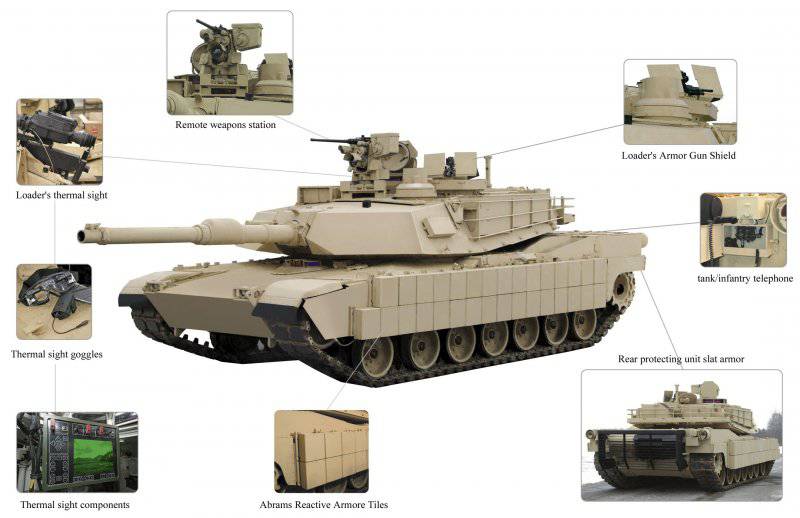
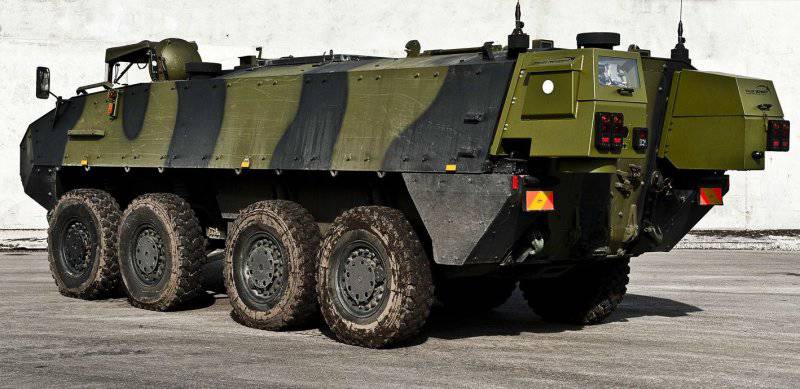
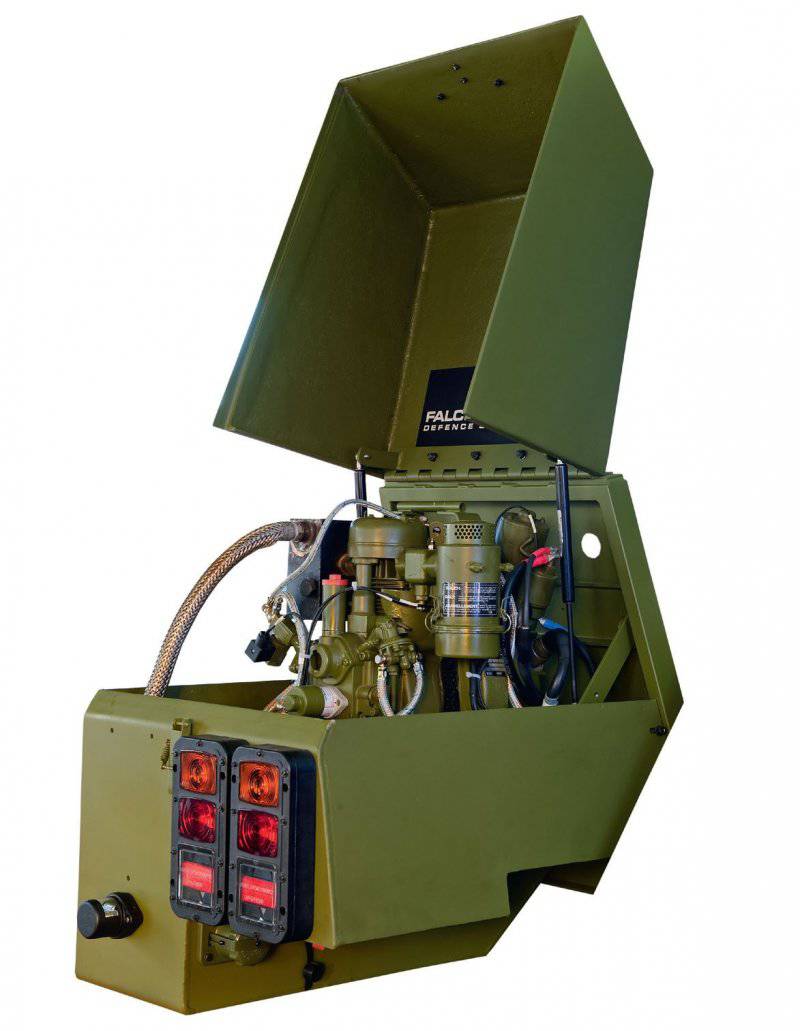
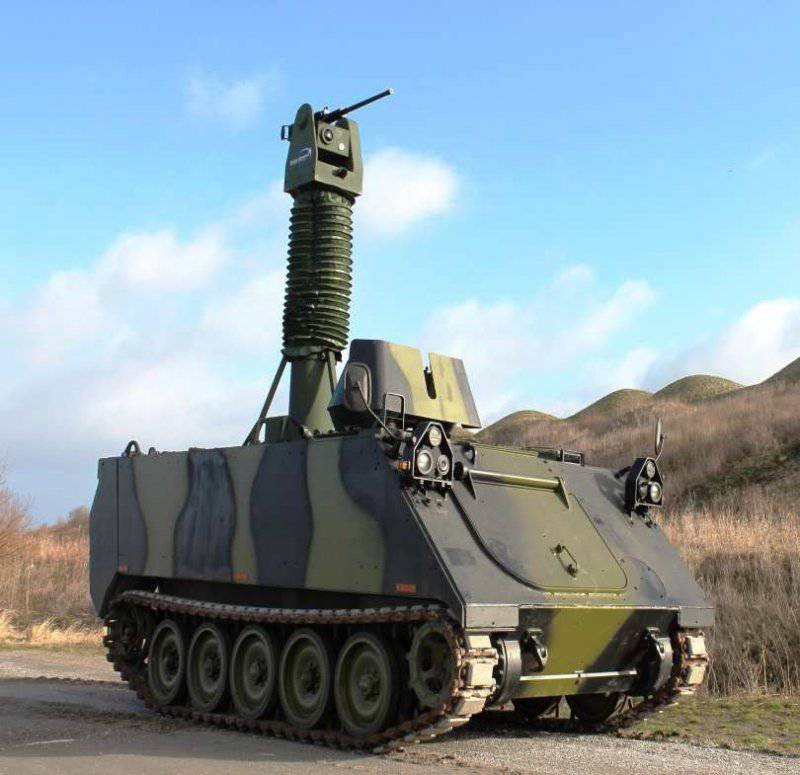
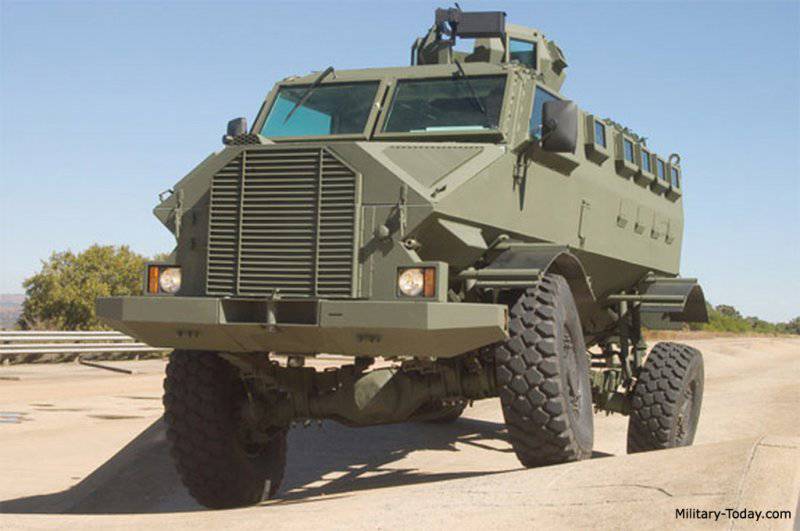
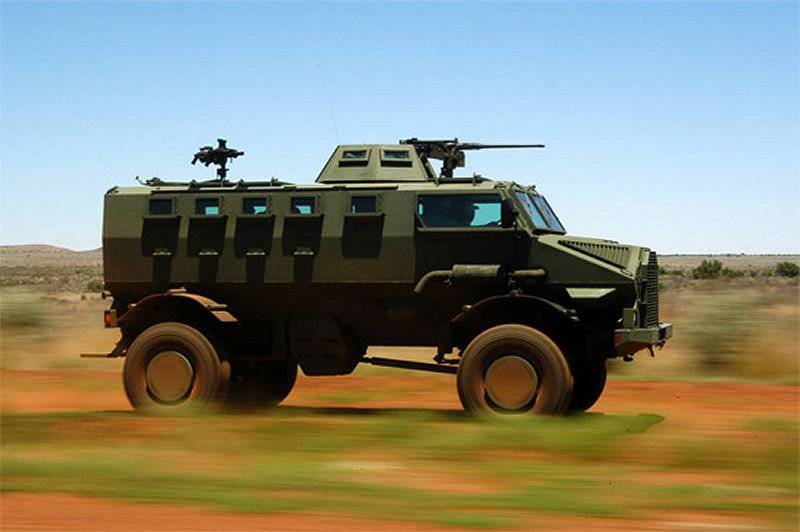
Information